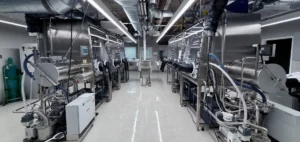French utility Électricité de France (EDF) has revised downward the expected output of its Flamanville EPR, which is currently in the testing phase. The group informed the Commission de régulation de l’énergie (CRE), France’s energy regulatory authority, that for the period between 2026 and 2031, it expects a maximum power output of 1,585 megawatts (MW), instead of the previously announced 1,620 MW in official public data. This projection is based on an assumption of lower final efficiency than originally anticipated, although no technical details currently substantiate this adjustment.
A power deviation with financial implications
This adjustment, disclosed in a CRE report published on 30 September, was released without technical documentation confirming any structural limitation or voluntary output restriction. The CRE stated that EPR testing is still ongoing, and in the absence of validated information, it continues to base its analysis on the theoretical power output of 1,620 MW. This figure is notably used to calculate nuclear production costs for electricity pricing projections.
The 35 MW difference represents a decrease of approximately 2.2% compared to the initial announced capacity. According to estimates relayed in the press, this reduced output could represent an annual revenue shortfall of around EUR15mn ($15.79mn), if maintained over the plant’s expected 60-year operational lifespan. EDF has not confirmed these figures but stated that the exact power rating will only be known after the full power ramp-up phase is completed.
Ongoing testing of critical components
The Flamanville 3 reactor was connected to the grid in December 2024, following more than 12 years of delays linked to technical and industrial issues. EDF had initially aimed to reach 100% power output during summer 2025. This milestone was postponed to autumn due to further adjustments to the turbogenerator, a key component in converting steam energy into electricity.
Abnormal heating was detected on this equipment earlier in the year. EDF carried out adjustments to the turbine and indicated that their impact would be assessed during the power ramp-up phase. The unit is currently offline for additional valve work and is scheduled to restart on 17 October. The group also stated that the discrepancy between publicly disclosed figures and those used in internal simulations is not expected to have any significant impact.






















